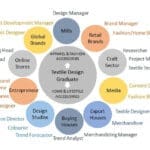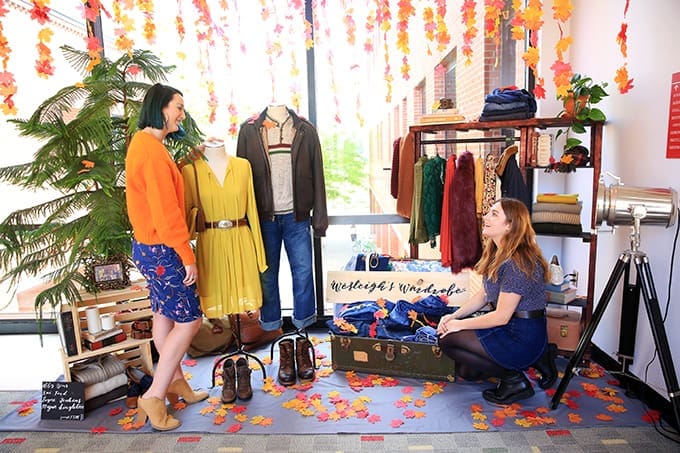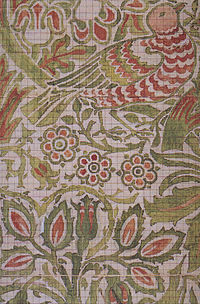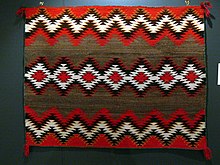Design and Management
We take design at its most simple definition that of a practical approach to problem solving. This remains true from industrial design to service design – designers build products and/or services to solve user and customer problems.
Management, in any business activity, is the act of working with people and processes to reach organization objectives in the most efficient manner possible. It can include planning, organizing, controlling, staffing and directing people and processes.
What it does not include is leadership. While some managers are leaders many are not and leadership is effectively bestowed upon a person by those who follow a leader and cannot be dictated by corporate position. Leadership is a proactive pursuit and leadership may change within a group dynamic depending on the situation currently being faced – management on the other hand is constant and more reactive. As Peter Drucker, the world renowned management consultant says; “Management is doing things right; leadership is doing the right things.”
What is Design Management?
Design management encompasses the ongoing processes, business decisions, and strategies that enable innovation and create effectively-designed products, services, communications, environments, and brands that enhance our quality of life and provide organizational success.
On a deeper level, design management seeks to link design, innovation, technology, management and customers to provide competitive advantage across the triple bottom line: economic, social/cultural, and environmental factors. It is the art and science of empowering design to enhance collaboration and synergy between “design” and “business” to improve design effectiveness.
The scope of design management ranges from the tactical management of corporate design functions and design agencies, including design operations, staff, methods and processes—to the strategic advocacy of design across the organization as a key differentiator and driver of organizational success. It includes the use of design thinking—or using design processes to solve general business problems.
Some examples of professionals that are practicing design management include design department managers, brand managers, creative directors, design directors, heads of design, design strategists, and design researchers, as well as managers and executives responsible for making decisions about how design is used in the organization.
A number of leading international educational institutions have established design management as a respected course of study and research, including Brunel University (UK), De Montfort University (UK), Illinois Institute of Technology Institute of Design (US), INHOLLAND University (Netherlands), KAIST (South Korea), Lancaster University (UK), MIP – Politecnico di Milano (Italy), Parsons School of Design (US), Pratt Institute (US), Savannah College of Art and Design (US), Suffolk University (US), University of Salford (UK), UMIST – University of Manchester Institute for Science and Technology (UK), and the University of Kansas (US).
As leading practitioners of design management and design leadership, DMI members are actively engaged in design thinking and managing industrial design, graphic design, service design, environment design, brand identity, fashion design, interface design, interior design, experience design, architecture and engineering. They work for corporations, design agencies, educational institutions, and government.
Design and Management Introduction
Design management is a complex field; it doesn’t relate to a single design discipline and the exact responsibilities attached to a design manager will depend on the organization they work for, the size of that organization (and the tier in the hierarchy at which the manager operates), the industry they work in, the current market position and to a large extent the perceived importance of design to the business.
That means that defining “design management” becomes a near impossible task. However, it is fair to say that design management in general works to support design within a business, the business and its objectives and the business’s interface with the market it operates in. This leads to three general roles that design managers will fulfill:
- Ensuring that design strategy and activities are in keeping with the larger business strategy
- Ensuring the quality of the outcomes of design activities within their remit
- Ensuring that user experience is prioritized and ensuring that it is user needs that create new products and differentiation from the competition

An example of how design management might be incorporated in a UX design working environment.
Areas of Design Management
As we said at the start of this piece; design falls into a large number of disciplines and thus so too does design management. Some of the more common areas in which design management can be found include:
- Product design. The manager here will be looking at managing all functions related to product development and release and securing relationships with other business units to facilitate this. A user-centered (or UX centered) approach is commonly the guiding force for this work.
- Brand design. Responsibilities here are for brand experience, developing touch points, and creating reliable, trustworthy perspectives that are strongly recognizable to clients.
- Service design. The flip side to product design and something that is becoming increasingly importance with the rise of the product-service hybrid. Service design takes a customer experience (CV) or customer-centered approach.
- Business design. Business design is an emerging concept – it’s the understanding that businesses can be designed from within to operate more efficiently and at higher levels of effectiveness. Typically, a business design manager will need to be very effective at persuading others of the utility of their designs.
- Engineering design. Engineering design is more concerned with technological outputs than other disciplines of design – be it a technological process (such as manufacturing) or technological artifacts (such as a system).
Where Does Design Management Fall Within Businesses?
Design managers will find themselves operating in businesses with one of these strategic orientations:
- Product-driven companies. In this instance it’s likely that the majority of design will fall within the company’s research and development function.
- Market-driven companies. In these businesses design is likely to belong within the marketing department.
- Brand-driven companies. These companies will often place design within the corporate communications department.
There are also three levels of corporate hierarchy that design managers operate from within:
- Operational. This is the “doing” of design and is concerned with managing projects and teams that deliver on the business strategy. Good managers will be able to measure performance in terms of outcomes. Common job titles for design managers here include: operations design manager, design team lead, senior designer, etc.
- Tactical. This is the “structuring” of design within a business – determining how projects are coordinated to achieve higher objectives, managing the skill and competency frameworks for design in a business, creating high-level systems for cooperation or support of design, etc. Common job titles at this level include: brand design manager, tactical design manager, design director, etc.
- Strategic. This is the “direction” of design within a business – the determination of how design will meet corporate strategy and the development of the individual design strategy. Common job titles at this level include: design director, vice-president for design, chief design officer, etc.
Textile management
Textile management is an interdisciplinary research subject where management issues in the textile and fashion industry (i.e. the value chain of textile products from concept to customer) are studied.[1][2] Textile management can be described as studies of practices related to the textile and fashion industry, including studies of the organization and management of textile and fashion-related supply and demand chains, including design and product design, product development, production and manufacturing processes, procurement, distribution and logistics, marketing, market communication and merchandising, retailing, consumer analyses, consumer behaviour, sustainability etc.[3] The reverse flow is also addressed, the aim of which is to recreate lost value, such as returns management, organization of recycling and reuse, etc.[4]
Researchers within Textile management have different backgrounds and the diversity mirrors the wide range of perspectives. Thus, Textile management is a multi- and interdisciplinary research area, i.e. a cluster of fields, which borrows different theoretical lenses and uses them in an applied setting. Researchers study different phenomenon, from entrepreneurship and innovation to integration of sustainability within the industry and local production of fashion.[5] The diversity is also mirrored in used research methods and views of knowledge. Qualitative methods (e.g. to understand ethics and moral within supply chains[6] and local, slow production[7]) as well as quantitative methods (e.g. to develop traceability systems[8]).
The discipline of Textile Management and related subjects (i.e. Textile and Apparel Management (TAM) and Fashion management) is a word wide area of education that, along similar lines, focuses on the study of textile & fashion businesses and value chains, entrepreneurship and consumers.[9] There are educations at both bachelor (B. Sc), master (M. Sc.) as well as Doctor of Philosophy (Ph. D) levels in different countries such as Sweden, France, Romania, USA and UK.
Textile design
Textile geometry is the creative and technical process by which thread or yarn fibers are woven together or interlaced to form a flexible, functional, and decorative cloth or fabric which is subsequently printed upon or otherwise adorned.[1] Textile design is further broken down into three major disciplines, printed textile design, woven textile design, and mixed media textile design, each of which utilize different methods to produce a surface ornamented fabric for variable uses and markets. Textile Design as a practice has evolved to become an industry integral to other disciplines such as fashion, interior design, and fine arts.
Printed Textile Design
Printed textile designs are produced by the application of various printing processes to fabric or cloth and other media, namely: resist printing, relief printing, rotogravure, screen printing, transfer printing, and digital printing.[8] These processes utilize various inks and dyes to imprint aesthetic, often repeating patterns, motifs, and styles onto the fabric or cloth.[9] Printed textile designers are predominantly and inextricably involved with home interior design (designing patterns for carpets, wallpapers, or even ceramics), the fashion and clothing industries, and the paper industry (designing stationary or gift wrap).[10]
There are numerous established and enduring printed styles and designs that can be broken down into four major categories: floral, geometric, world cultures, and conversational.[8] Floral designs include flowers, plants, or any botanical theme. Geometric designs feature themes both inorganic and abstract such as tessellations. Designs surrounding world cultures may be traced to a specific geographic, ethnic, or anthropological source. Finally, conversational designs are designs that fit less easily into the other categories: they may be described as presenting “imagery that references popular icons of a particular time period or season, or which is unique and challenges our perceptions in some way.”[8] Each category contains sundry, more specific individual styles and designs.
Woven Textile Design
Woven textile design emanates from the practice of weaving which produces fabric by interlacing a vertical yarn (warp) and a horizontal yarn (weft), most often at right angles.[14] Woven textile designs are created by various types of looms and are now predominantly produced using a mechanized or computerized jacquard loom.
Designs within the context of weaving are created using various types of yarns, utilizing variance in texture, size, and color to construct a stylized patterned or monochromatic fabric. There are a large range of yarn types available to the designer, including but not limited to cotton, twill, linen, and synthetic fibers. In order to produce the woven fabric, the designer first delineates and visualizes the sequence of threading which is traditionally drawn out on graph paper known as a point paper.[16][17]
The designer also will choose a weave structure which governs the aesthetic design that will be produced. The most common process is a plain weave, in which the yarns interlace in an alternating, tight formation producing a strong and flexible multi-use fabric. Twill weaves, which are also common, alternatively utilize diagonal lines created by floating the warp or the weft to the left or the right.[18] This process creates a softer fabric favored by designers in the fashion and clothing design industries. Common and recognizable twill styles include patterns like houndstooth or herringbone.
Textile Design and the Environment
The practice and industry of textile design present environmental concerns. From the production of cloth from raw material, to dyeing and finishing, and finally the ultimate disposal of products, each step of the process produces environmental implications that have proliferated with the emergence of fast fashion and other modern industrial practices.
Predominantly, these environmental impacts stem from the heavy use of hazardous chemicals involved in each step of the textile creation process which must be properly disposed of. Other considerations involve the amount of waste created by the disposal of textile design products and the reclamation and re-use of recyclable textiles.[25] The Environmental Protection Agency reported that over 15 millions tons of textile waste is created annually. This consists of some 5% of all municipal waste generated and only 15% of that waste is recovered and reused.[26]
These concerns have led to the birth of sustainable textile design movements and the practice of ecological design within the field. For instance, London’s Royal Society of the Arts hosts design competitions that compel all entrants to center their design and manufacturing methods around sustainable practices and materials.







